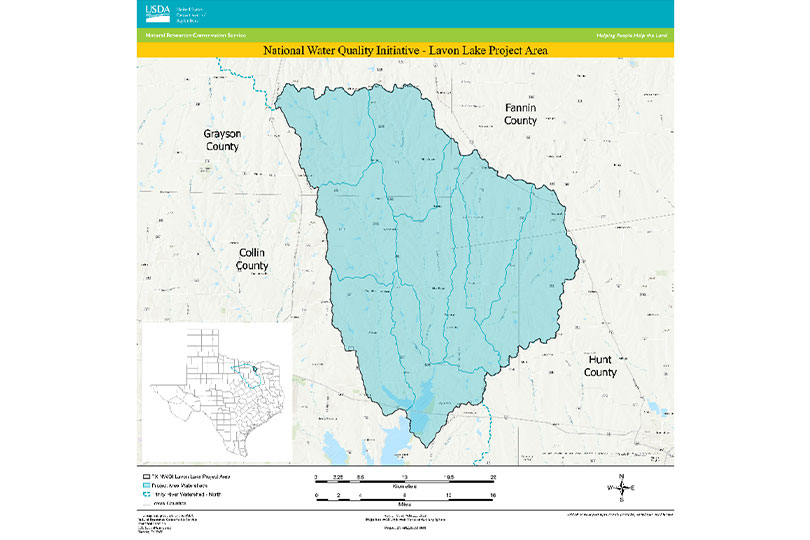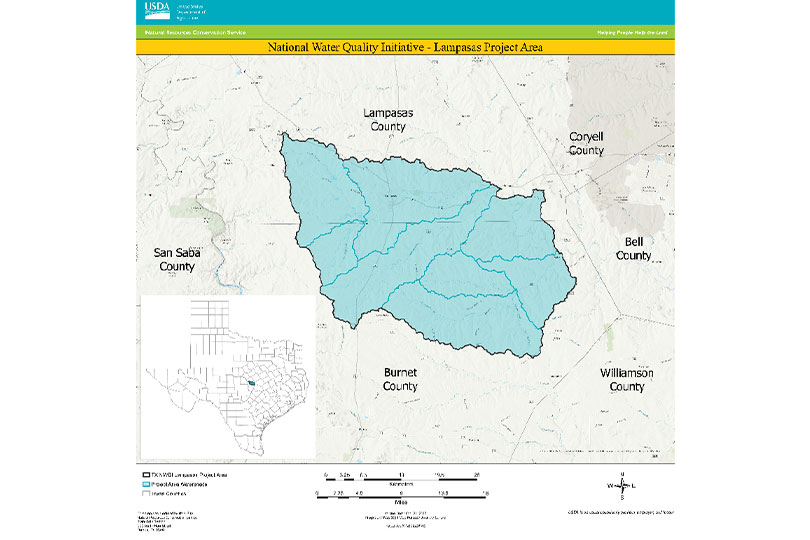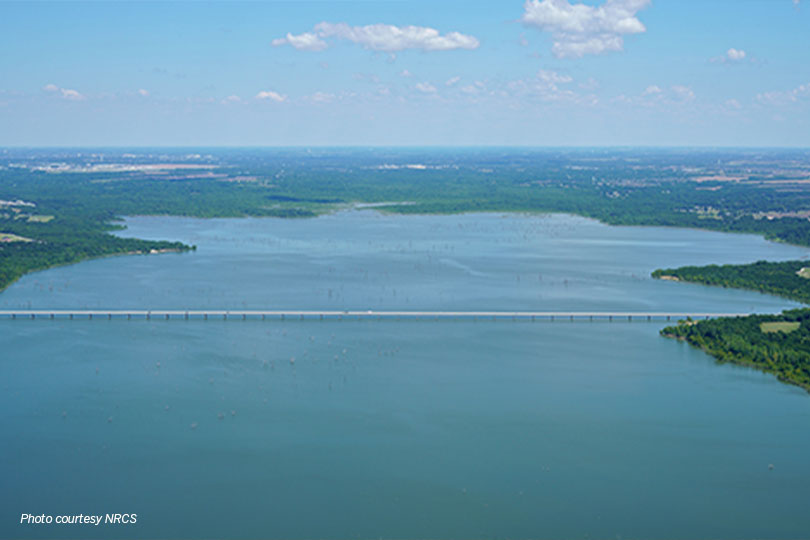The USDA Natural Resources Conservation Service (NRCS) is announcing funding opportunities for farmers, ranchers and landowners interested in implementing conservation practices on their property in two high-priority watersheds in Texas through the National Water Quality Initiative (NWQI). The funding application deadline is April 29, 2022.
Through NWQI, NRCS will provide financial and technical assistance in this watershed using funds from the Environmental Quality Incentives Program (EQIP) for implementing and planning conservation practices to make a difference in water quality downstream. One of the designated watersheds for 2022 is the Lake Lavon watershed, which is the uppermost reservoir on the East Fork of the Trinity River and is a primary source of raw water supply for the North Texas Municipal Water District. This initiative impacts parts of Fannin, Grayson, Hunt, and Collin Counties in positive ways through voluntary conservation.

The other watershed is the Lampasas River NWQI priority area is located within the Lampasas River watershed near the towns of Lampasas, Kemper and Briggs in Texas. These watersheds are upstream of Stillhouse Hollow Lake which is a primary drinking water source for much of the surrounding area. These sub-watersheds are in Lampasas and Burnet counties.

Eligible farmers, ranchers and landowners in the watersheds in Grayson, Collin, Fannin, Hunt Burnet and Lampasas Counties can apply for financial assistance to voluntarily implement conservation practices to help provide cleaner water for their neighbors and communities. Conservation systems include practices that promote soil health, reduce erosion and lessen nutrient runoff, such as filter strips, cover crops, reduced tillage and grazing management. These practices not only benefit natural resources but enhance agricultural productivity and profitability by improving soil health and optimizing the use of agricultural inputs, according to NRCS.
“We’ve learned that when we partner with producers to deliver conservation practices to critical watersheds, we see a positive impact,” Kristy Oates, NRCS state conservationist for Texas, said. “Through these partnerships with private landowners, we maximize the delivery of our conservation efforts which yields greater results to water quality and benefits the public, our natural resources and farmers’ bottom lines.”
Interested parties in the eligible counties can apply for assistance by April 29 at their local USDA Service Center to be considered for the 2022 ranking funding period.
Visit the Texas NRCS website under “National Water Quality Initiative” for more details.
To learn more about NWQI or other technical and financial assistance available through NRCS conservation programs, visit Get Started with NRCS or contact your local USDA Service Center.
National Water Quality Initiative
The initiative is a partnership among NRCS, state water quality agencies and the U.S. Environmental Protection Agency to identify and address impaired water bodies through voluntary conservation. NRCS provides targeted funding for financial and technical assistance in small watersheds most in need and where farmers can use conservation practices to address impaired surface water. In 2019, NWQI was expanded to include protection of both surface and ground sources of drinking water.
Water quality is improving in NWQI watersheds. State water quality agency partners report that 27 percent of NWQI monitoring watersheds show an improvement in water quality in at least one of the NWQI-monitored pollutants (based on 2016 data). Further, 81 percent of these improvements can be attributed to or associated with agricultural conservation practices implemented by farmers and ranchers.
Since its launch, NWQI has:
- Helped producers implement conservation on 825,000 acres
- Reduced sediment loss by 850,000 tons
- Reduced phosphorous loss by 2 million pounds
- Reduced nitrogen loss by 9.6 million pounds.

